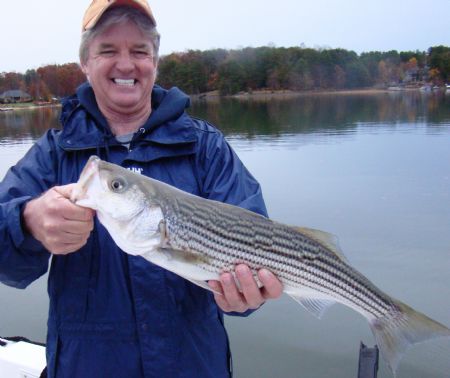
Even with cold weather continuing to plague North Carolina, anglers can find hot places to fish — as in “hot water” holes.
“Both of the hot holes at Lake Norman (near the Marshall Steam Plant and McGuire Nuclear Plant) you can go in and catch lots of different types of fish,” said Craig Price, a Lake Norman striper and catfish guide. “Especially the canal leading to the Marshall Steam Plant has stripers, (largemouth and spotted) bass and catfish.”
Best lures are bloodworms, but anglers also use live shad, plus rainbow trout and golden trout, said Price (704-996-0946, www.fishonlakenorman.com).
“The rainbow and golden trout are available at most of the bait stores around the lake, while most of the bank anglers (at Marshall) use bloodworms,” he said.
Bass anglers use artificial lures such as plastic worms and jigs and soft plastics.
“There also will be some surface action when (Duke Energy) is generating power at both stations,” Price said. “You can throw small topwater lures, such as (Zara) Spooks and Pop-Rs, along with stick baits and (shallow-diving) Rapalas to catch both bass and stripers that are schooling.”
Out on the main lake, anglers also have been coming across stripers in stumpy, rocky creeks.
“Most of that action has been on live trout, or if you can get decent-size shad or buy blueback herrings, they are effective too,” Price said.
Most of that type fishing is by slow trolling.
“Guys uses free lines on the surface down to various weighted lines that go as deep as 40 feet,” he said. “The best thing to do is use a good depth-finder to search for big schools of bait. Shad will appear as clouds off the bottom while herring usually look like a solid line.
“If you find a concentration of baits like that, you can catch stripers, spotted bass and catfish.”
The water temperature near the power plants is usually 5 to 10 degrees warmer than on the main lake, Price said.
“For real schooling action, you want to fish as close to the barriers (that prevent boats from getting too close to hot-water discharge pipes) as you can get,” he said.
Price said the hot-water discharge can have a large effect, as far as several miles from the power stations.
“Watch for wind direction, too, because it’ll push that hot water around the lake,” he said. “Sometimes all it takes is a 1 or 2 degree temperature difference to turn on the bite no matter where you’re at.”





Be the first to comment